
© Andy Ross, Scottish Ballet. (Click image for larger version)
Scottish Ballet
Cinderella
Edinburgh, Festival Theatre
5 December 2015
www.scottishballet.co.uk
www.edtheatres.com
A fancy, somewhat akin to a scintilla of empathy with the character of Cinderella, came courtesy of experiencing just a smidgeon of that heroine’s trials and tribulations on her journey to the bewitching ball. My coach was not so bedazzling – rather, a down-at-heel Virgin East Coast railway carriage – but my journey was similarly disrupted; not by a wicked stepmother, but by that nasty Desmond, wreaking havoc on the north of these islands during a record-breaking wet weekend.
I arrived at Edinburgh’s Waverley Station, some five hours later than planned, having played dodge-the-fallen-overhead-cables from east to west coast and back again; and then battled fierce rain and winds so strong that my hat blew away, sailing off in the wind like Mary Poppins and her brolly. But, another and different kind of Celtic welcome awaited this sodden and bedraggled incomer; it came in a Quaich (a two-handled pewter drinking cup), proffered by a sympathetic hotel receptionist, bearing a tot or two of Glayyva, the discovery of which was the second-best reason for overcoming the discomfort of Storm Desmond to make this trek to Scotland.

© Andy Ross, Scottish Ballet. (Click image for larger version)
And an even warmer inner glow came from the primary and best reason for my visit, which was the European premiere of Christopher Hampson’s Cinderella, a shimmering, radiant spectacle that quickly evaporated the dampness. Hampson made his Cinders on the Royal New Zealand Ballet, a company similar in size and stature to Scottish Ballet: national ballet companies that were each founded, in the 1950s, by the missionary zeal of dedicated individuals; RNZB now has an ensemble of 32 dancers, Scottish Ballet has 36; and they both punch well above their weight in terms of international recognition. These similarities place both companies on a steady par with the notable exception of the “Royal” sobriquet; which made me wonder if it is absent from the Scottish title by omission or commission. Surely, it has long been deserved.
Like his music for Romeo and Juliet, Sergei Prokofiev’s descriptive score has been a seductive magnet for choreographers, since its premiere in the closing months of World War Two. But, all have struggled with the long first act. Ashton gave it pantomime dames, Fonteyn partnered with a broom and a camp dancing master; Bintley cleverly bookends the tale by having his Act One Cinderella in bare feet; Ratmansky provides a mêlée of character introductions and farcical stepsister humour; and Wheeldon adds a backstory for the prince and a magical tree, representing the spirit of Cinderella’s dead mother.
Like Wheeldon, Hampson initially presents a darker take on the tale, more Brothers’ Grimm than Perrault, opening – as the audience arrive and the house lights up – with the funeral of Cinderella’s mother, clearly linked to the sorrowful introduction of Prokofiev’s score. The notion of her grave at the foot of a magical tree, nurtured through Cinderella’s tears, is also at the heart of Hampson’s concept – and, by the way, his original 2007 production pre-dated Wheeldon’s joint production for San Francisco Ballet and Dutch National Ballet by some five years. Hampson also eschews the idea of “ugly” stepsisters, describing one as “short” and the other “tall”, with the former being shy and unconfident, rather than nasty, and enjoying the sub-plot of her own romance with one of the Prince’s friends (another device in common with Wheeldon’s narrative).
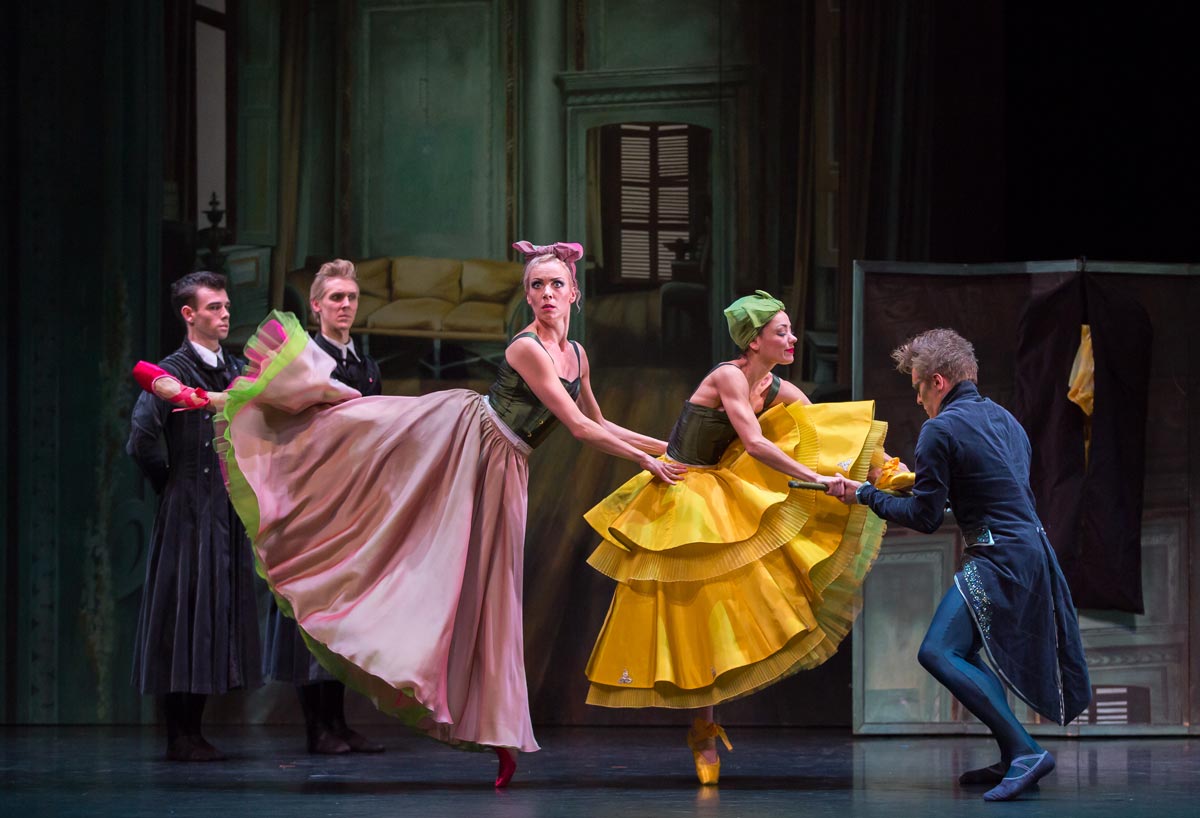
© Andy Ross, Scottish Ballet. (Click image for larger version)
The stepsisters are much more a continuing feature throughout Hampson’s ballet, as perhaps evidenced by casting the company’s leading principal ballerinas in these roles, both achieving uproarious comedic value. Sophie Martin is the uncoordinated, socially naïve, “short “brunette, the girl who would surely have been the scapegoated victim to her mother and sister, were it not for Cinderella; and Eve Mutso is hilarious as the lascivious, bullying, want-it-all, “tall” blonde. Martin’s comedic, bad dancing is achieved to a degree that only a great dancer could carry off. Both performers have been with the company since 2003 and although they don’t carry the show, their huge experience of interpretative dance theatre certainly helps to make it a success.
Another outstanding contribution came from the orchestra, conducted by Richard Honner, which gave a richly detailed account of Prokofiev’s melodious score. The orchestra pit at the Festival Theatre is generous, more open and less deep than the norm; a feature that would appear to significantly improve the acoustic impact. Although there would have been no reason to do so, it would have been possible to close your eyes and be carried away by the musical excellence.
Much of the artistic impact derives from the art nouveau flavour of Tracy Grant Lord’s simple but effective and, above all, magical designs: roses, trees and roots predominate, carrying the spirit of Cinderella’s mother from her tree-side grave and into the house that is no longer a home, dominated by a spiteful stepmother (wickedly portrayed by Sophie Laplane) allowed to run riot by the drunken vacancy of a weak-willed father (Nicholas Shoesmith). I was captivated by one circular design motif that appeared throughout; coils of layered ribbons or roots that appeared to squash a moustachioed man’s face: a figment of my imagination; or a mysterious leitmotif to represent the father’s downfall?
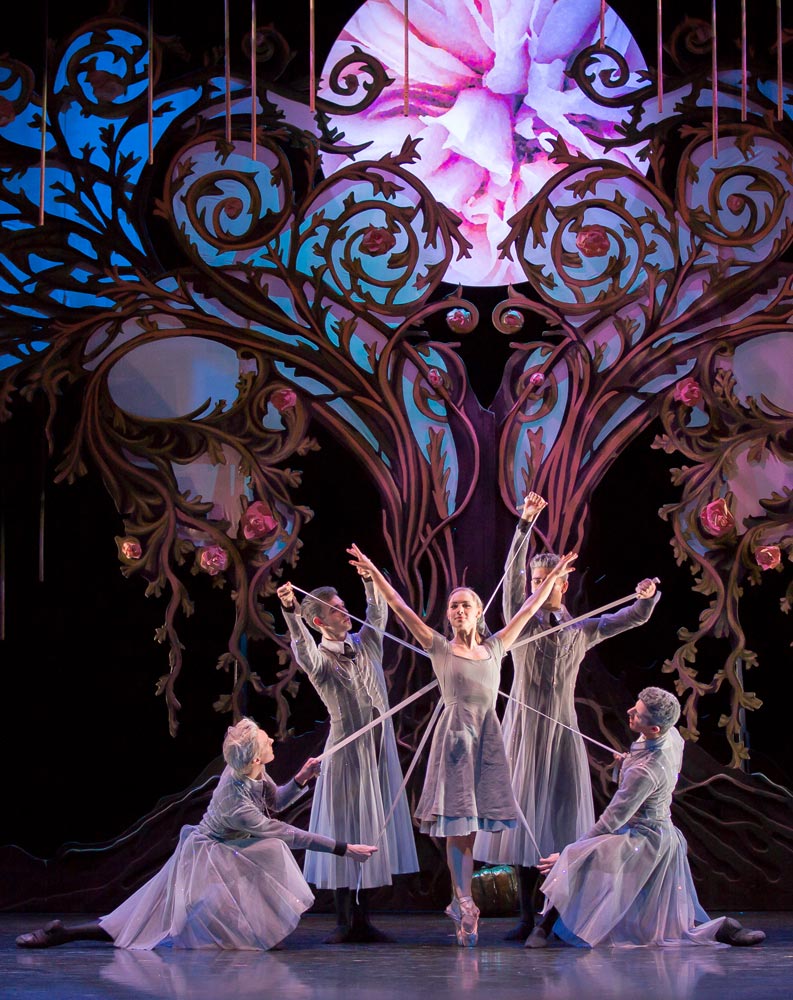
© Andy Ross, Scottish Ballet. (Click image for larger version)
Grant Lord’s designs for the Ball were both dreamy – a diagonal row of extravagant chandeliers against a starlit sky – and imaginative, with what appears to be an airport runway, picked out in lights, in the far-distant vista.
Beyond the principal players, Hampson’s cast evolves with the narrative, playing upon the fantasy garden theme by turning people into insects with comparable skills: thus, his dancing master (Jamiel Laurence) becomes a grasshopper; his cobblers are silk moths; and his dressmakers transform into spiders. These transitions are captured in Grant Lord’s costume designs, each bearing some reference to integrate the human and insect forms. But, of course, as it should be, her piece de resistance is Cinderella’s turnout for the Ball, a stunning Swarovski-embellished, sparkling white cape and matching tutu with floral detail.
The trump card is Hampson’s ever-challenging choreography, firmly rooted in his own palette of no-nonsense classical language. His movement is intuitively fixed in equal measure to both the score and the narrative intent. His is the only choreography – in my memory, at least – that pays due respect to the essential purpose of the Ballroom pas de deux; just as Cinderella’s tutu sparkles with the lustre of those Swarovski stones, so Hampson uses classical movement to give accents that interpret a ballroom dance.

© Andy Ross, Scottish Ballet. (Click image for larger version)
He retains a strong vein of consistency in his movement motifs for each character without resorting to obvious repetition in choreography that flows and soars to show us the loneliness, sadness and disharmony of the household; the calm serenity of the Fairy Godmother (Araminta Wraith), here surely shown as an embodiment of the mother’s spirit; the exciting anticipation of the waltz; much humour, both bittersweet and raucous; and, of course, the tender romance and lovesick quest of the end game. It is a masterpiece of fantasy dance theatre, beautifully crafted and brought to the stage with memorable impact.
After using his two most experienced principals as first-cast stepsisters, Hampson then chose up-and-coming soloist, Bethany Kingsley-Garner as his opening Cinderella and she rewarded him with a performance that radiated sweet, unsullied goodness, tinged with a fiery protection towards the memory of her mother. As in the Ashton choreography, the Prince is little more than a supporting character, hardly fleshed out at all, and Christopher Harrison does his best to give the role substance. The complex and intricate flow of testing choreography wobbles momentarily for both leads but nothing detracts from the enjoyment of this special interpretation of one of the world’s most popular stories, described in one of the best full-length ballet scores of the twentieth century.
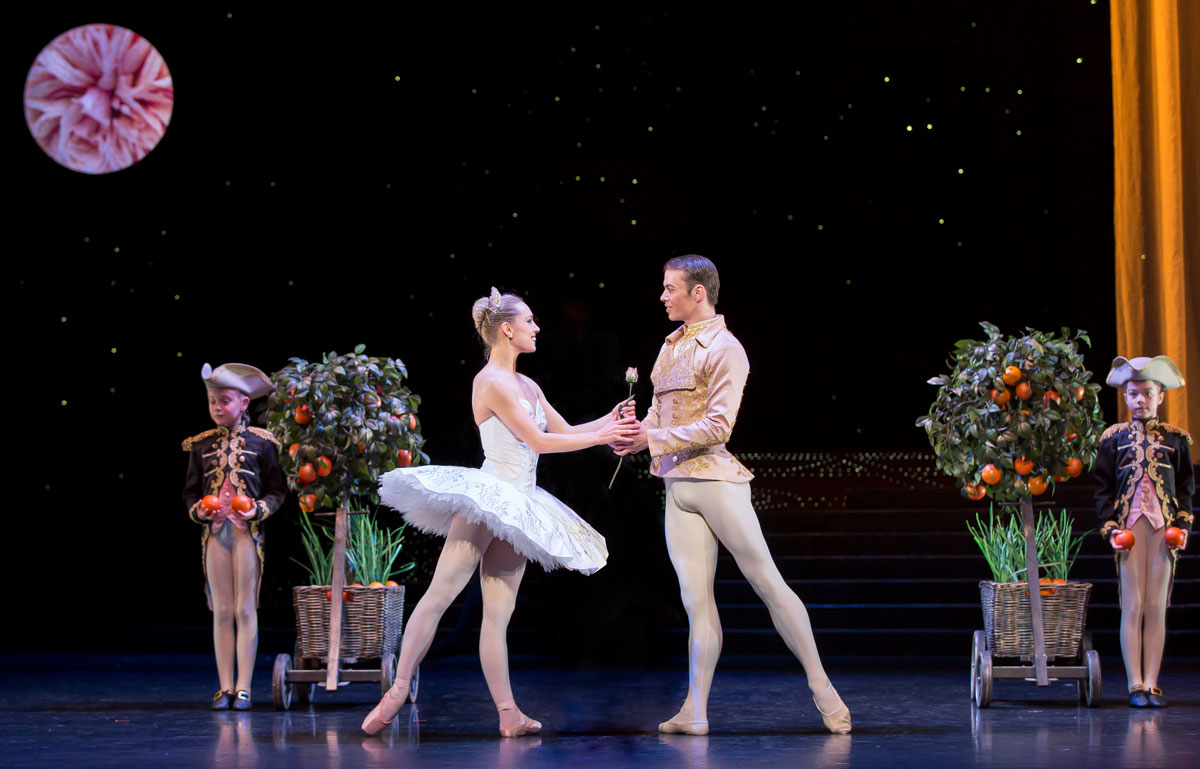
© Andy Ross, Scottish Ballet. (Click image for larger version)
Despite the stormy weather, no city makes itself up for Christmas and Hogmanay quite like Edinburgh. Edinburghers brave the rain and winds – wearing more stable hats than mine – with alacrity and a sense of fun. They know that there’s a glass (or two) of Glayyva (or some other tipple) waiting at home; and, for 2015, at least, they can also be assured of a Christmas season that is topped off by this wonderful interpretation of a classic ballet.














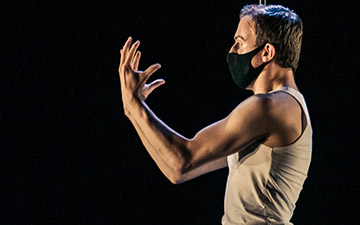
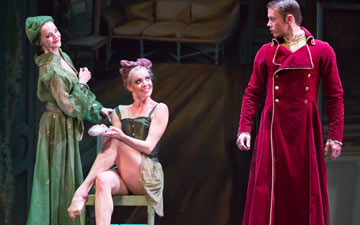

You must be logged in to post a comment.